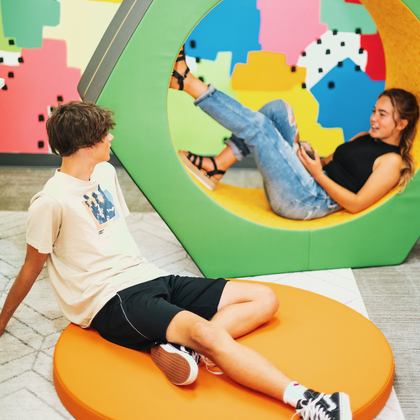Loading...

The Ecology of Spaces to Support Well-being
David Jakes
The need for supporting student well-being has always been present in schools. The pandemic intensified this need, and current efforts to create the conditions for student (and educator) well-being will be complex. Regardless of the efforts to reshape the policies and practices of the daily experience of what occurs at school, it is essential that space becomes a part of the solution when rethinking schools as places that support wellness and well-being.
To help you understand both terms in their simplest form, wellness is a function of students making healthy choices. These choices can lead to a condition or state of well-being. The end goal is to get to a place where kids can thrive.
In my opinion, moving forward, wellness and well-being must be considered principal drivers for the design or improvement of any school space.
What could this look like and what should schools consider about spaces?
The typical response for most schools might be to create a wellness center. That space might be aligned with other student service spaces such as the guidance department or the nurse’s office.
That’s a start and an appropriate one. I would consider that a typical response. But supporting both wellness and well-being is not the job of any single space.
It's the job of every space.
Establishing the spatial requirements for the development of well-being requires thinking that all spaces in schools are connected together in support of this effort.
Here are strategies that can be employed to develop an ecology of spaces that support wellness and well-being:
- Develop respite spaces in classrooms composed of soft seating elements. Give students the option of taking a quick break to reset and get back in the game.
- Focus on underutilized spaces in your school such as hallways that can be designed to support well-being. Use furniture where appropriate, color, wayfinding techniques, supergraphics, and messaging to create a reimagined space that provides new options for student engagement, connection, and the development of belonging.
- Double down on comfort. Comfortable seating helps to destress students, allows for movement and fidgeting, and improves focus, which leads to a readiness to learn.
- Go beyond the classic school beige when applying color to the school environment. Use yellow (supports positive thinking, addresses depression), green (associated with nature), and pink and lavender (reduces aggression and addresses anxiety) in the design of spaces. How color is applied can make a big difference in creating environments that cue student behavior in the right way.
- Find spaces whose contribution to well-being might not be readily apparent and get creative. For example, consider the school’s traffic circle and drop-off area - how could this space support not only student well-being but community well-being? There are unlikely spaces across your entire campus that could contribute in a similar way. Remember that all spaces can contribute; it just takes creativity and a new lens and focus to see the potential.
Establishing the environments and expectations for developing well-being is a complex undertaking. It requires thoughtful discussion and an intentional design focus on creating solutions that will serve students and the entire school community. Space has a role to play in this process, and forward-thinking schools will embrace space as a contributor to the solution set they are developing to address issues associated with wellness and well-being.